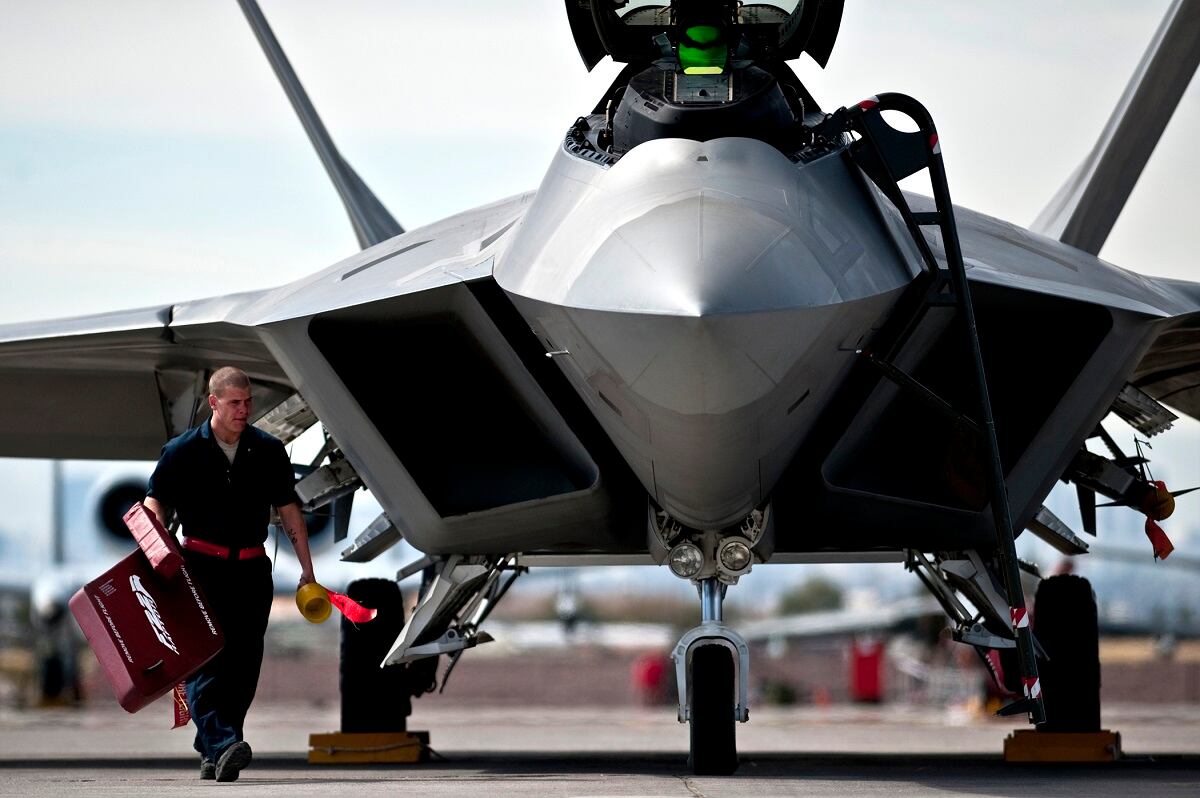GRAPEVINE, Texas —The Air Force has submitted a plan to improve the mission-capable rates of F-22, F-35 and F-16 squadrons, which currently is below the 80 percent readiness level ordered by Secretary of Defense Jim Mattis.
The plan’s submission was confirmed by Secretary of the Air Force Heather Wilson, who laid out some details in an exclusive interview at the Airlift Tanker Association’s annual symposium outside Dallas.
Mattis set the level in a Sept. 17 memo, first obtained by Defense News, that ordered the Air Force and Navy to get mission-capable rates for F-22, F-35, F/A-18 and F-16 fighters to 80 percent by the end of 2019, a significant increase from where they were when those figures were last released to the public.
According to the Air Force data for fiscal 2017, released in March, the F-16C fleet reported a mission-capable rate of 70.22 percent, the F-35A fleet reported 54.67 percent and the F-22A reported a low rate of 49.01 percent.
RELATED

As for what’s in the Air Force’s plan, Wilson says it includes maintenance staffing, spare parts availability and overall logistics across the Air Force, as well as changes to some Air National Guard units.
“That includes plussing up our supply accounts, that includes making sure that we prioritize our maintainers for those particular fighter units,” she said in the interview. “That will mean shifting some money around in our budget, but we’ve put a plan together to do that.”
As for improvements to Air National Guard units, Wilson said the Air Force is both assigning new active-duty pilots and planning to add a second maintenance shift which she says could drive a sharp increase in mission-capable rates.
“If a jet comes in, and there’s something wrong with it and it needs maintenance, instead of sitting overnight, and then being not mission capable first thing in the morning, and then not being on capability for the rest of that day, we’ll actually have a second shift in maintenance," Wilson said. “The maintainers are there working on it overnight, so you can significantly increase your mission-capable rates."
Adding the active duty pilots could also increase mission-capable rates as they are able to fly more than Guard pilots, meaning aircraft assigned to those squadrons could fly more. Wilson explained that those pilots, who are some of the newest in the Air Force, will gain valuable leadership experience — and a lot of flight hours.
“Its a way of seasoning them and getting them a lot of flying time and a lot of senior mentoring very quickly," she said.
In an interview at Lockheed Martin’s production facility for F-35s in Fort Worth, Bruce Litchfield, the vice president of sustainment operations for the company’s aeronautics division, said the company, the prime contractor for F-16s, F-35s and F-22s, was looking forward to supporting the Air Force in increasing mission-capable rates.
“Sustainment is not rocket science, but its really hard and complex. You have to bring a whole bunch of things together. Engineering, tech data, support equipment, availability of new and improved tools to the field,” he said. “We’re really looking at this one as a systems engineering process, and we’re working across our full envelope of weapons systems.”
This story was updated to reflect an accurate transcript of Bruce Litchfield’s interview.
Jeff Martin is the Associate Editor for Multimedia and the host & producer of Defense News Weekly, airing online and on American Forces Network worldwide. In his role as Associate Editor, he reports worldwide on the military and defense industry and leads a market-leading multimedia team.





